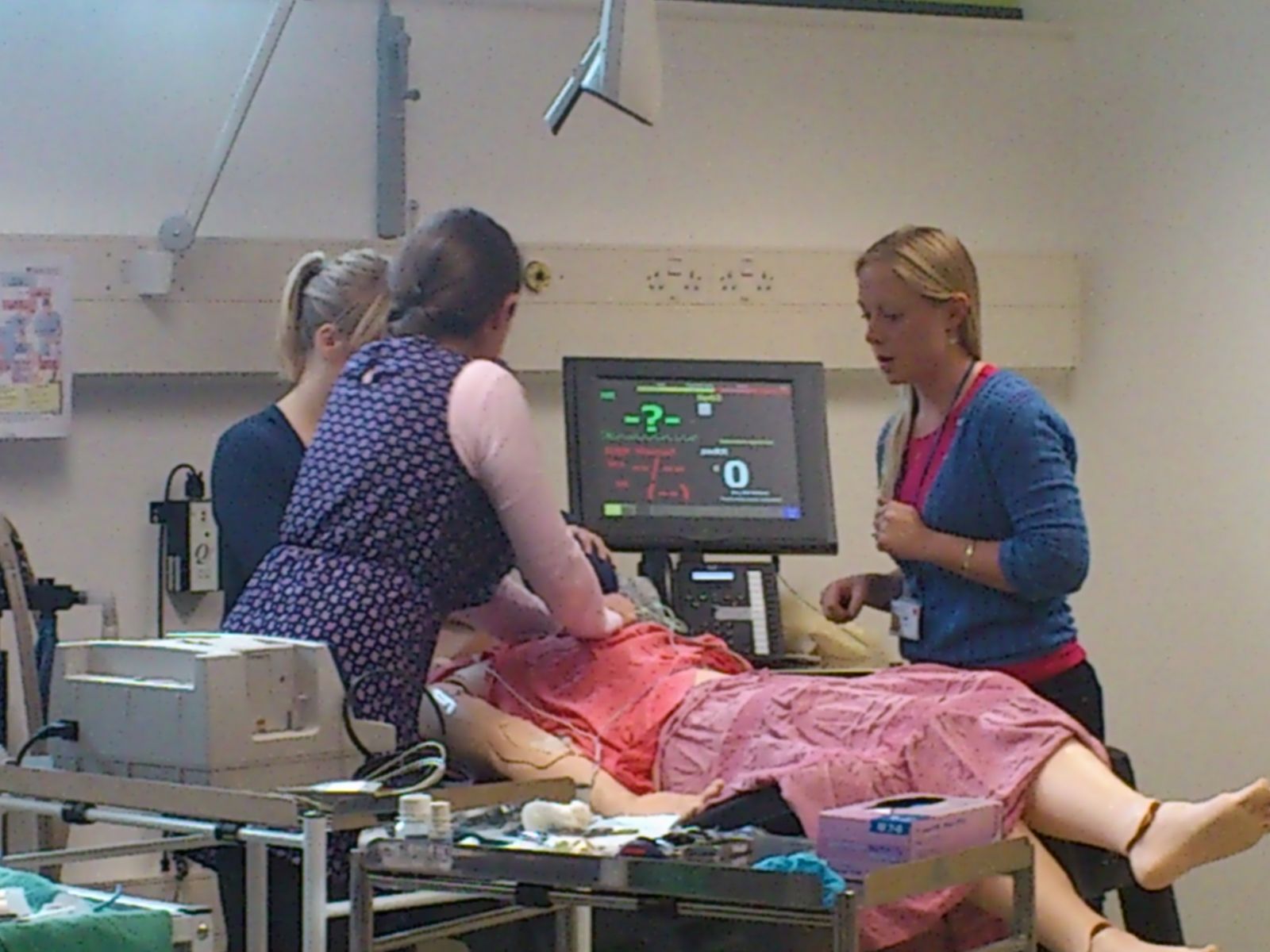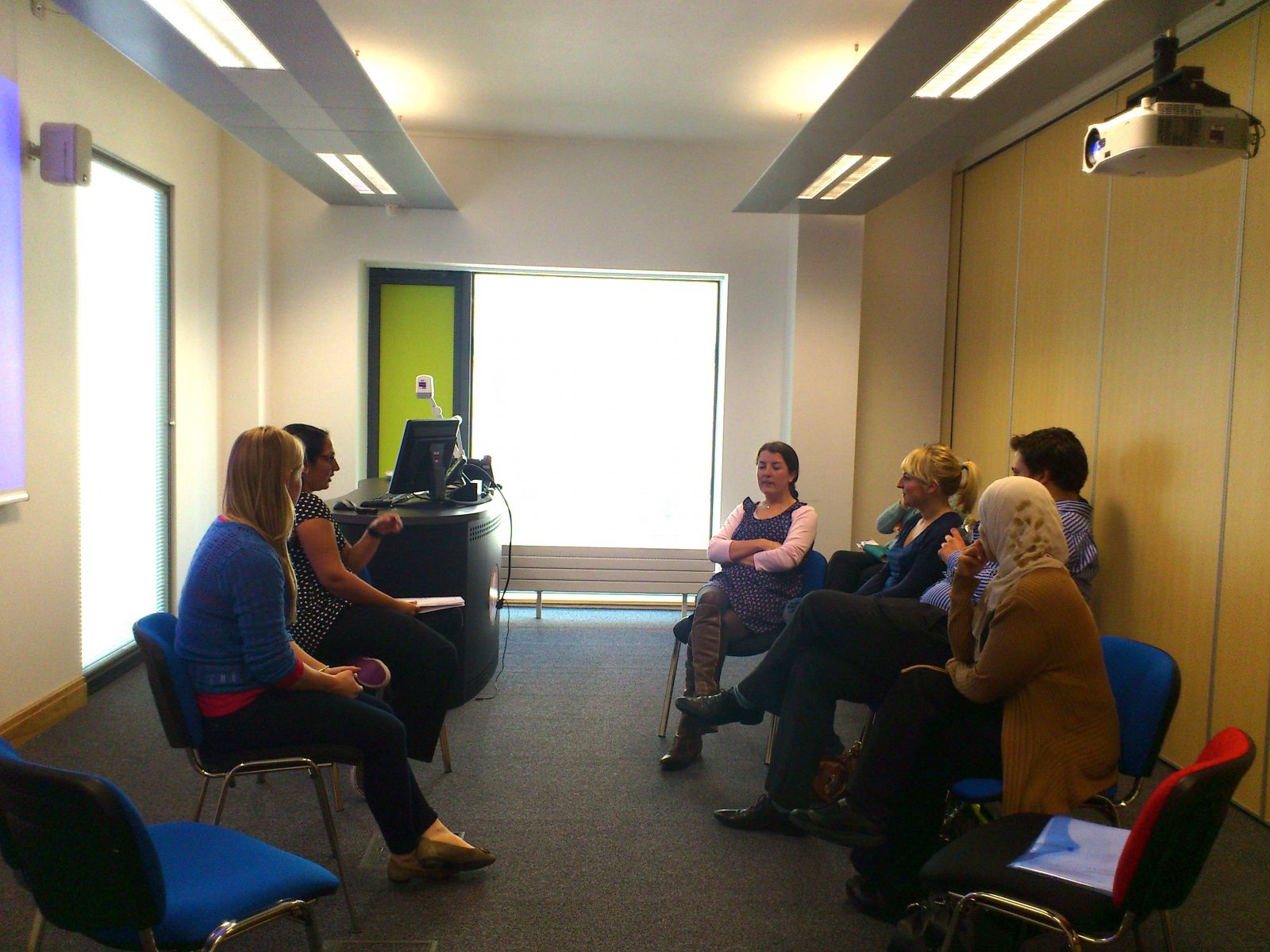


Theme
7II Simulation and Simulated Patients
INSTITUTION
University Hospital of Wales - Department of Anaesthesia
Cardiff University

The Cardiff Simulation Centre has been providing inter-professional simulationtraining in management of medical emergencies for Dental Sedation MSc postgraduate students since 2008. This takes the form of scenario-based sessions where participants engage with a patient simulator, managing a medicalemergency common to the dental sedation environment. Group debriefing in which facilitated reflection is encouraged follows each scenario.
There is evidence to show that simulation can produce improvements in performance in managing medical emergencies, as well as improve outcomes for patients across multiple clinical specialties (1,2)
Dentists providing dental sedation may encounter life-threatening emergencies during the course of their professional life. There is good evidence that adverse changes in cardio-respiratory physiology occur quite frequently during procedures performed under sedation, in particular hypoxaemia and myocardial ischaemia (3).
Participants undertook simulation training sessions to practise common medical scenarios in the dental sedation environment. Group debriefing followed each scenario, led by a trained and experienced facilitator. The groups consisted of 8-10 students, with 2 students participating in the scenario and the rest observing. All students reflected on the issues raised
All students completed questionnaires immediately before and after the simulation sessions. Their confidence in managing various medical emergencies was recorded on a visual analogue scale.
Students were grouped according to previous simulation experience (1st or 2nd exposure). Visual analogue scores were converted to a decimal scale (0-10), and the mean score for each scenario calculated. Differences in means for pre-and post-simulation training were evaluated using the Wilcoxon-signed-rank test.
| Scenarios |
Year 1 students Pre Mean (range) |
N = 16 Post Mean (range) |
p |
Year 2 students Pre Mean (range) |
n = 17 Post Mean (range) |
p |
|
Airway obstruction |
6.7 (3.8 - 9.9) |
8.0 (6.1 - 9.9) |
o.oo2 |
6.2 (2.8 – 9.4) |
8.2 (5.1 - 9.9) |
<0.001 |
|
Flumazenil use in epileptics |
2.5 (0 - 6.6) |
7.3 (0.3 - 9.9) |
0.001 |
4.6 (0 – 9.3) |
8.2 (4.9 - 9.9) |
<0.001 |
|
Anaphylaxis |
6.1 (3.4 - 9.9) |
8.2 (5.6 - 9.9) |
0.001 |
5.9 (1.6 – 9.3) |
8.3 (6.4 – 9.9) |
<0.001 |
|
Aspiration |
5.1 (2.8 – 7.8) |
8.0 (5.3 – 9.9) |
0.001 |
4.6 (1.4 – 8.1) |
8.1 (4.1 – 9.9) |
<0.001 |
|
Respiratory depression |
5.0 (0.9 – 8.1) |
7.7 (4.8 – 9.9) |
0.001 |
5.1 (1.3 – 9.3) |
8.3 (5.1 – 9.9) |
0.001 |
|
Breathing problems |
5.1 (0.8 – 7.9) |
7.6 (4.8 – 8.9) |
0.002 |
5.1 (1.6 – 8.9) |
8.2 (5.3 – 9.6) |
<0.001 |
|
Cardiac arrest |
5.4 (2.4 – 9.3) |
5.9 (1.8 – 9.3) |
0.363 |
5.7 (1.6 – 8.9) |
8.4 (4.4 - 9.6) |
<0.001 |
|
Asthma |
5.8 (3.1 – 9.3) |
7.9 (6.1 – 9.9) |
0.002 |
5.8 (1.4 – 9.4) |
8.5 (6.8 – 9.4) |
0.001 |
33 data sets were collected and analysed (16 year 1 students; 17 year 2 students). Mean confidence scores for each scenario are displayed below. Confidence improved in managing all emergencies practised, and the difference was statistically significant.
Year 1 students did not practice a cardiac arrest scenario, but their confidence in its management was explored. This did not change significantly.

Whilst self-assessed confidence does not equate with competence, its improvement in this mature group of professional learners, coupled with previous published research, lends weight to the usefulness of simulation training, and supports its inclusion as part of the Dental Sedation MSc Programme.
Its validity is reinforced by the fact that their confidence did not improve in managing scenarios that had not been practised or discussed during the session. Further studies to determine objective improvement of performance in this environment and duration of retention of skills might be required

Simulation training is a valuable tool to maintain and improve clinical skills within dental sedation practice.
1.) Wayne D. Didwania, A. Simulation-based education improves quality of care during cardiac arrest team responses at an academic teaching hospital: a case-control study. Chest 2008;133(1): 56-61
2.) Draycott, T., Sibanda, T. Does training in obstetric emergencies improve neonatal outcome? BJOG. 2006; 113: 177–182
3.) Conscious sedation in the provision of dental care : report of an Expert Group on Sedation for Dentistry, Standing Dental Advisory Committee 2003
 Send Email
Send Email